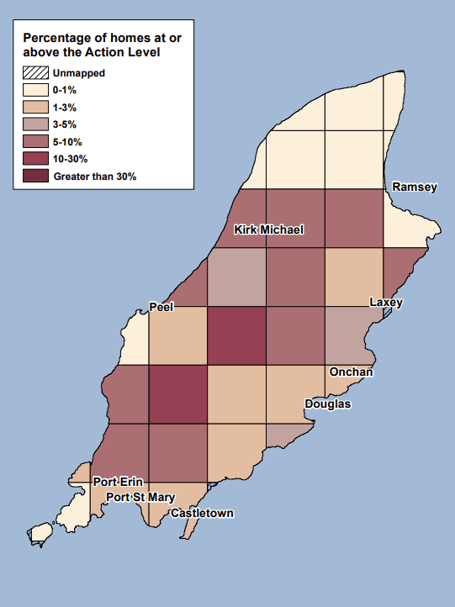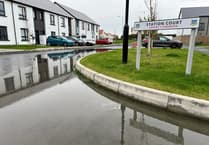Homeowners in ‘higher risk’ areas of the Isle of Man are being encouraged to test their properties for radon levels.
For the first time, a radon risk map has been produced for the Isle of Man showing areas where a higher percentage of homes are expected to reach or exceed the recommended action level.
Around 96% of the Island’s homes are likely to fall below this threshold - but those in higher-risk areas are encouraged to test their property.
Radon is a naturally occurring radioactive gas which can pose a health risk if it accumulates indoors.
It is produced by the decay of uranium and thorium in rocks, soil, and some building materials. Every building contains it, but levels are usually low. The likelihood of higher levels depends on the type of ground a property is built on.
Radon is the second leading cause of lung cancer after smoking - and the risk is highest for smokers and those working in basements.
Good ventilation and fresh air are the most effective ways to reduce indoor radon levels.
Paul McKenna, DEFA’s Radon project leader, said small-scale building works that could be carried out in affected homes, which could be as simple as installing extra air bricks under suspended floors, or the slightly more complex installation of a vent pipe from beneath a concrete floor.
The Isle of Man is the first Crown Dependency to join the UK Health Security Agency’s radon mapping programme which has surveyed more than 600,000 properties over the past 40 years.
Dividing the island into 35 areas, each covering around 25 km² (9.7 square miles), the new map has darker areas indicating where higher indoor levels are more likely - although not guaranteed.
Of 700 homes surveyed, 25 had levels above the UK action level of 200 Bq/m³.
The UK Health Security Agency’s radon group leader Tracy Gooding said: ‘Radon is a public health issue that we continue to address, and this new map extends our monitoring and knowledge across the British Isles.
‘We are pleased that our work has provided the Isle of Man Government with the information they need to raise awareness and meet legal obligations to reduce radon exposure.’
One notable finding is that outdoor radon levels are effectively zero due to the island’s size and weather conditions.
Homeowners in higher-risk areas are encouraged to test their property using kits available from the UKHSA website at a price of £52.80.
The Department of Environment, Food and Agriculture (DEFA) has committed to fund mitigation surveys for the small number of survey participants whose properties exceed the action level.
There is currently no funding for new mitigation surveys, although the findings may inform future support.
Dr Matt Tyrer, director of Public Health, added: ‘Reducing radon exposure, particularly for people who smoke, is one of the most effective ways to lower lung cancer risk alongside stopping smoking.’

.jpeg?width=209&height=140&crop=209:145,smart&quality=75)

.jpeg?width=209&height=140&crop=209:145,smart&quality=75)
